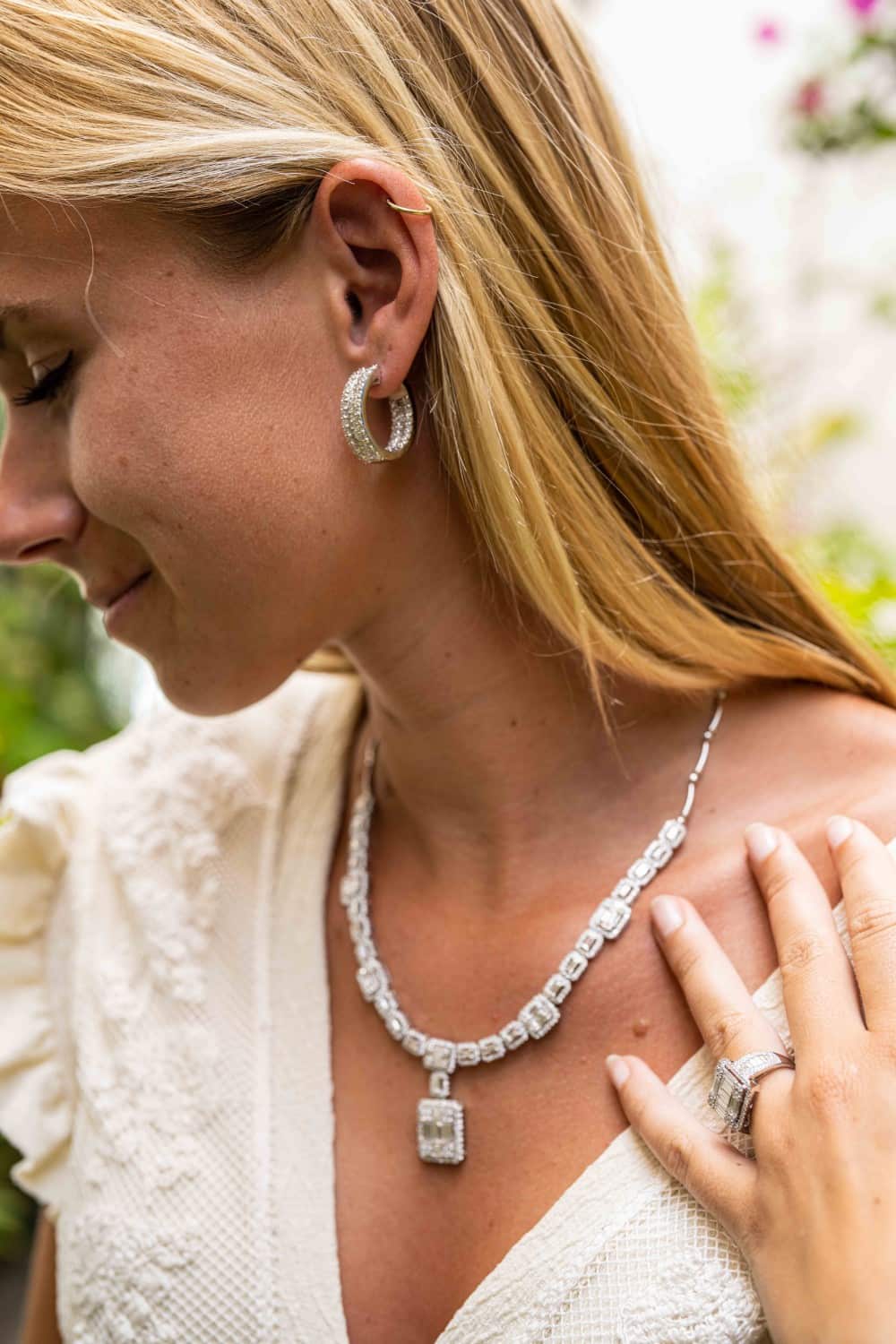Diamond Buying Tips
The word alone conjures up a thousand images: rare, precious, desirable, beautiful, sparkling tokens of love ... Created deep within the core of the earth more than 3 billion years ago and brought to the surface by volcanic eruption, most of the diamonds sparkling on fingers today are more than 100 million years old!

Diamonds
Even before these magnificent creations of nature were mined in profusion toward the end of the 19th century, they were a source of fascination and value to early man. The Romans thought diamonds were splinters from falling stars while the Greeks regarded the sparkling gems as tears of the gods. It is a derivation of the Greek word "adamas," meaning unconquerable, that gave the diamond its name.
Rare and fascinating, mysterious and magical, the diamond has ignited fires of war and romantic passion throughout history.
The diamond claimed its place as the primary token of love toward the end of the 15th century when Austrian Archduke Maximilian gave the first diamond engagement ring to his betrothed. It was placed on the fourth finger of her left hand because that finger was believed to course with the vein of love that passed directly to the heart. Five centuries later, the diamond remains one of the most luxurious and desirable gifts for any romantic and celebratory occasion, a gem whose purity and brilliance symbolizes lasting love.
WHAT MAKES A DIAMOND SPECIAL?
Beauty- The colorless beauty and inner fire of the diamond has made this precious gem prized for centuries. Each stone's complex characteristics cannot be duplicated and no two diamonds can ever be the same. Each stone, like its owner, is endowed with a personality and character uniquely its own.
Durability- A diamond is the hardest substance known to man, making it resistant to deterioration. When cared for properly, diamond jewelry can be worn every day and passed on as a heirloom to the next generation.
Purity- Although new resources for diamonds are being explored and discovered, the supply of these gems remains limited. This is understandable once you learn that more than 250 tons of ore need to be blasted, crushed and processed to yield just one carat of rough diamond. Further, only 20 percent of all rough diamonds are suitable for gem cutting.
Enduring Value- Like many precious products, diamond prices fluctuate. But it is important to know that these sparkling gemstones still retain value after years of being worn and enjoyed.
TERMS YOU SHOULD KNOW
Just like the infinite range of diamond qualities and colors, there are many different shapes and setting techniques offered by today's designers. Here is a mini-glossary of the most important ones.
Baguette:This refers to a rectangular-shaped small diamond that is often used to enhance the setting of a larger stone.
Bezel setting: A diamond is completely surrounded by a precious metal border in this setting technique that resembles a picture frame.
Channel setting: Popular for mounting rows of small, uniformly-sized stones, this setting technique uses two strips of metal to hold the stones at the sides. Used for round, baguette and square-cut stones, the channel setting resembles a railroad track with the diamonds in the center.
Fancy cut: A diamond cut in any shape other than round. Fancy cuts include such shapes as baguette, emerald, triangle, pear, princess, oval and marquis.
Pavé setting: A setting technique for small diamonds in which the stones are set so closely together that no metal shows. A pavé surface appears to be paved with diamonds.
Solitaire: The mounting of a single gemstone.
Tiffany setting: A four- or six-prong setting using long, slender prongs to hold the stone.
Caring for your diamond
Diamonds may be the hardest substance known to man, but they too can be damaged or dulled. Your diamond jewelry will benefit from the following tips:
Don't jumble your diamond jewelry together or with other pieces because diamonds can scratch other jewelry and each other.
Keep your diamond jewelry in a fabric-lined jewel case or in a box with compartments or dividers.
Don't wear your diamonds when doing rough work. Even though a diamond is durable, it can be chipped by a hard blow.
Clean your diamonds regularly using either commercial jewelry cleaner, a mix of ammonia and water, or a mild detergent. Dip the jewelry into the solution and use a soft brush to dislodge dust or dirt from under the setting.
Don't let your diamond come in contact with chlorine bleach or other chemicals because they can pit or discolor the mounting.
See us every time you visit the island to have your diamond jewelry professionally cleaned and checked for loose prongs and wear.


